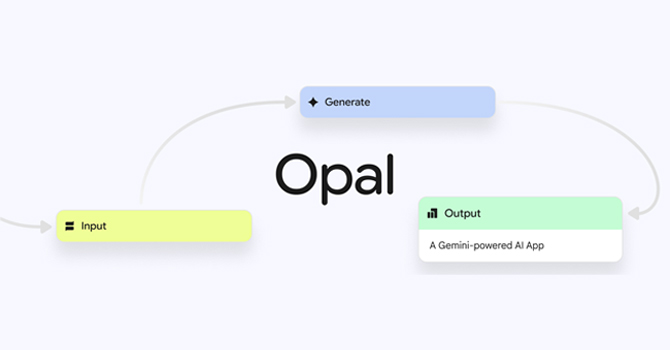Google has launched a new experimental tool called Opal, currently available via Google Labs in the U.S., that reimagines how mini web apps are built. With Opal, users describe the app they want using plain language prompts. Behind the scenes, Google’s AI generates a visual workflow detailing each logical step from input to output, which can be viewed, edited, or extended. The result? A usable app that can be published and shared instantly, without writing a single line of code.
This user-friendly approach opens app development to non-coders including educators, marketers, and small business owners, allowing rapid prototyping of ideas like meal planners, feedback forms, or data dashboards. By combining prompt-based creation with visual transparency, Opal aims to reduce technical barriers and enable anyone to build digital tools with ease.
What is Opal and how it Works
Opal is Google’s entry into the growing field of vibe‑coding – an AI-first workflow where apps are generated via logic prompts instead of manual coding. It features:
- Text-based prompts
Describe the app’s functionality (e.g., “Create a meal planner with reminders”).
- Visual workflow editor
Opal uses Google’s AI to build the app logic visually, showing each step. Users can click a step to view or modify its prompt.
- Editable flow
Add or adjust steps manually through a toolbar keeping full control over logic.
- Instant sharing and publishing
Completed apps can be deployed via shareable links to anyone with a Google account.
Why Opal Matters
Google’s Opal enters a competitive landscape alongside tools like Canva, Figma, Replit, and other prompt-based coders. But unlike traditional IDEs or developer-focused platforms, Opal targets non-technical creators, enabling them to bring ideas to life quickly.
This shift marks a significant step toward democratizing app development and making rapid prototyping accessible to anyone. Even small teams can now build and test mini-apps such as customer surveys or internal tools without relying on software engineers.
What’s Next and What to Watch
Opal is in early U.S.-only beta, meaning it is still under development. While feedback has been generally positive about its ease of use, limitations remain, such as no custom domain support and occasional buggy output. Its current use case is primarily prototyping rather than full-scale app deployment.
Upcoming updates could include broader regional access, enhanced publishing features, and integration with Google’s wider ecosystem, such as Firebase or Workspace, paving the way for Opal to become a core tool in lightweight app creation.
Bottom Line
Opal offers a novel approach to app creation: simple, prompt-based, and code-free. While still experimental, it empowers a broader range of users to prototype and share functional software tools quickly. As Google continues to refine Opal, it may redefine how creative professionals, small teams, and non-coders bring digital ideas to life. For anyone involved in innovation, rapid prototyping, or internal tooling, this is a tool to watch closely.
- OpenAI Unveils ChatGPT Atlas: The AI Browser - October 22, 2025
- The New Dr. Google is in: Here’s How to Use it Wisely - October 15, 2025
- Leadership in the AI Era: 5 Skills That Drive Real Impact - October 8, 2025




